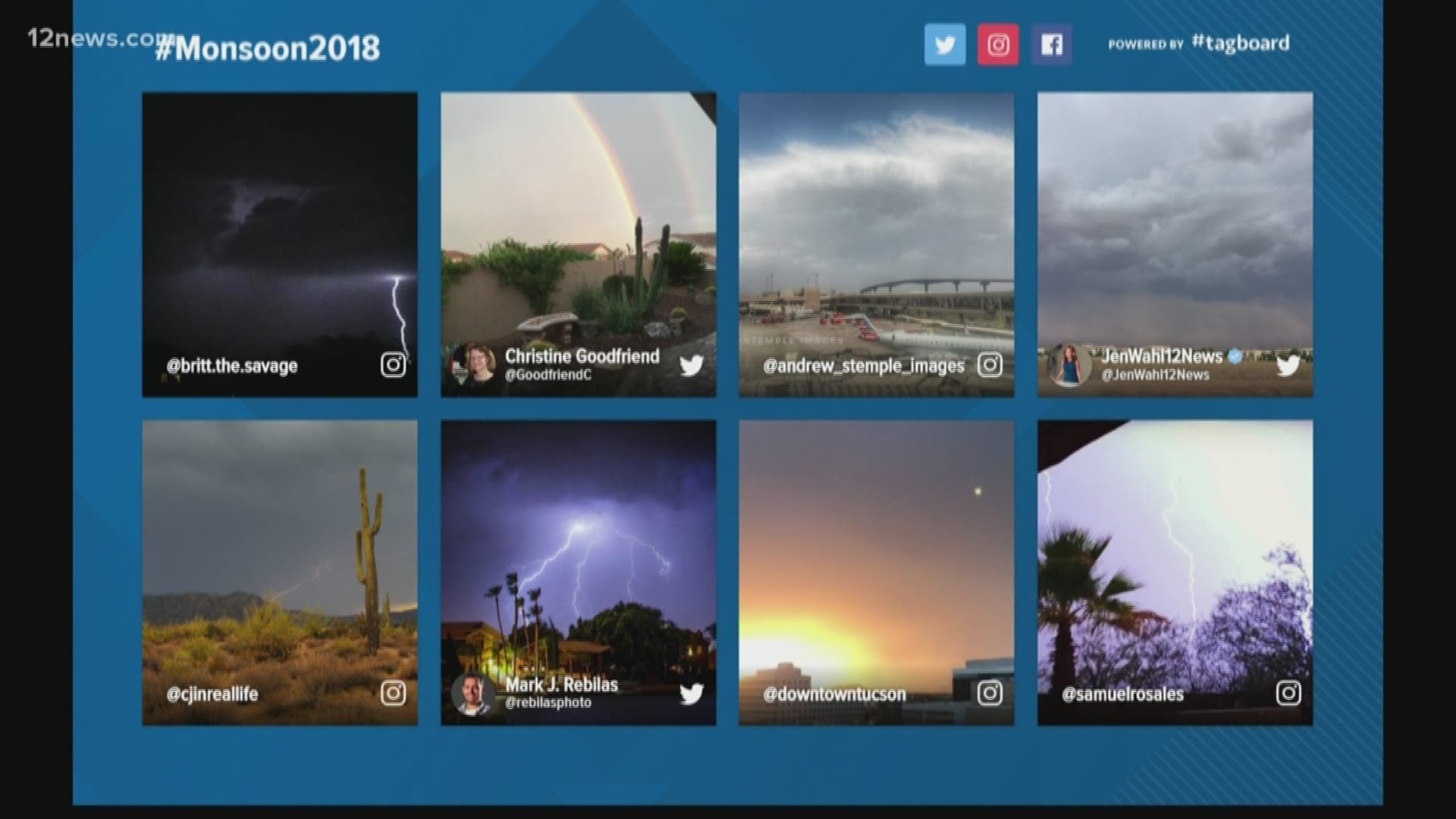PHOENIX - Storms have been popping up across the Valley for days now and we've received some pretty amazing pictures right here at 12 News.
So, how do the experts take the stunning shots over and over again?
Chad Bricks, Team 12's chief photographer, has some pro tips for anyone wanting to shoot Mother Nature safely.
First, Chad says you can capture many of the photos on your phone or professional camera. The secret is opportunity. Be in the right place at the right time, and have your phone or camera ready at all times.
There are dozens of radar apps that you can download to see where storms are and which direction they're heading. Just make sure you're always in a safe location when snapping away.
If you find yourself with only your phone when Mother Nature opens up, there are apps you can download to turn your phone into a professional machine. One of Chad's favorite apps is ProCamera. He says it gives you full control over settings like shutter speed and focus. If you're not sure which settings to adjust first, there's a lot of information on Google to help.
Practice is another key to snapping the best photos. Practice whenever you can on sunrises and sunsets. So when the storms hit, you're more prepared.
A tripod is a huge bonus when snapping weather photos. If you're trying to capture that perfect night sky, use a slower shutter speed and tripod. For lightning, Chad says a faster shutter speed will do the trick. If you want to blur a waterfall, the same applies as with stars -- slower shutter speed. There are apps for that too.
Another tip to snapping the slower shutter speed photos is downloading an HDR app. There are also settings for that on professional cameras. HDR sees the image and takes three pictures of the image. It then takes the highlights, low lights and finds the best middle ground photo.
Wondering why some weather photos are so much more vibrant than the ones you snap?
Chad says many times, those are edited in post production. He recommends a photo editor like Aviary, which is free. You can also pay monthly or yearly fees for programs like Photoshop.
Finally, we always love seeing your weather photos!
You can easily share those with us by joining the 12 News Weather Watchers page on Facebook or posting using #BeOn12.

